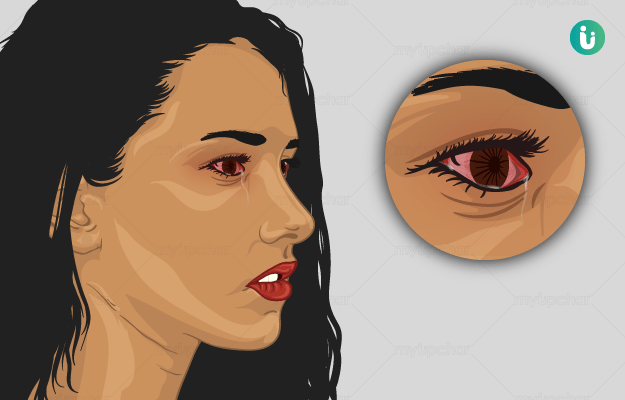What are eye infections?
Eye infections are very common and are a cause of major discomfort. Bacteria, virus and fungi are all capable of causing eye infections, resulting in redness, swelling, itching, discharge and pain in the eyes. One of the most commonly occurring eye infections is conjunctivitis, which is usually a viral infection.
What are its main signs and symptoms?
Signs and symptoms associated with common eye infections include:
- Conjunctivitis and blepharitis:
- Puffy eyes.
- Pain.
- Swelling.
- Watery discharge from the eyes.
- Bacterial keratitis:
- Pain.
- Redness.
- Discharge.
- Photophobia.
- Tearing.
- Decreased or blurred vision.
- Corneal ulcer.
- Herpes simplex virus keratitis:
- Pain.
- Decreased or blurred vision.
- Tearing.
- Discharge.
- Ulcer.
- Itching.
- Photophobia.
- Endophthalmitis:
- Pain.
- Decreased vision.
- Redness.
- Stye:
- Pain.
- Presence of a lump which may be filled with pus.
- Eyes appear red and are watery.
What are the main causes?
The causes of eye infections differ for every infection and may include:
- Conjunctivitis: It is often contracted by direct contact with a person suffering from conjunctivitis.
- Bacterial keratitis: This often occurs as a result of contact lens wear or trauma.
- Herpes simplex virus keratitis: This is caused by the herpes simplex virus.
- Endophthalmitis: It is an inflammation or swelling caused by microbial infection. It often occurs after eye surgery, trauma, and intravitreal (inside the eye) injections.
How is it diagnosed and treated?
Eye infections are diagnosed on the basis of medical history and careful physical examination.
An ophthalmologist may examine your eyes using a slit-lamp microscope.
Investigations include:
- A culture of scrapings from the cornea or conjunctiva.
- A culture of discharge from lower conjunctival sac or eyelid.
- Biopsy of the cornea.
Treatment depends on the type of infection, symptoms and severity. Some treatments for commonly seen eye conditions are as follows:
- Your doctor may prescribe antiviral drops or gels in case of viral conjunctivitis. Oral antibiotic agents will be required for bacterial conjunctivitis.
- Chloramphenicol is the most commonly prescribed drug for bacterial keratitis.
- Herpes simplex keratitis is treated with oral antiviral agents and topical steroids.
- Endophthalmitis may require vitreal injections or intravenous (in the vein) injections along with oral antibiotics.
- Treatment of a stye involves symptomatic relief with paracetamol or other analgesics (painkillers). Holding a warm cloth against your eye for a few minutes helps reduce the swelling.
Your ophthalmologist will advise you to avoid wearing contact lenses until your infection has completely subsided.

 Doctors for Eye Infections
Doctors for Eye Infections  OTC Medicines for Eye Infections
OTC Medicines for Eye Infections



















